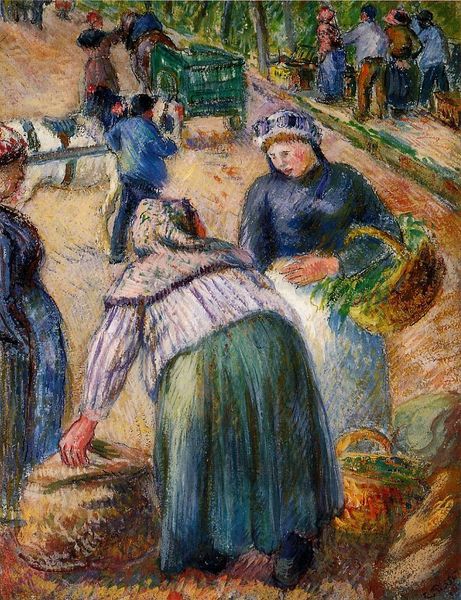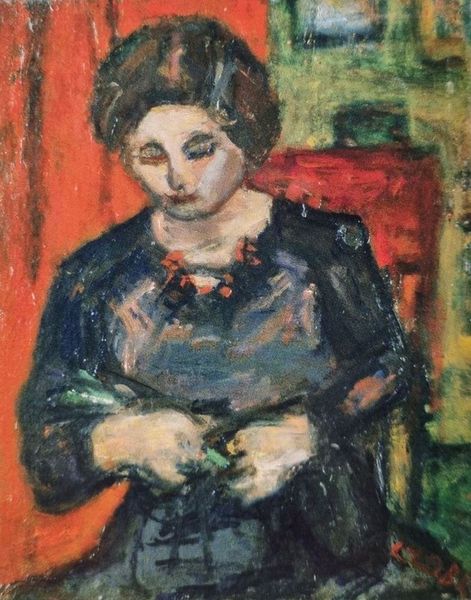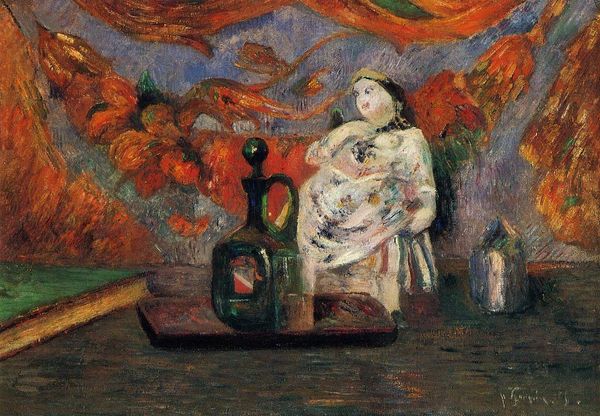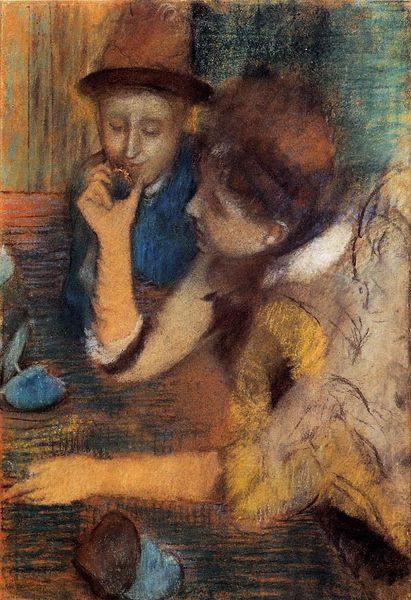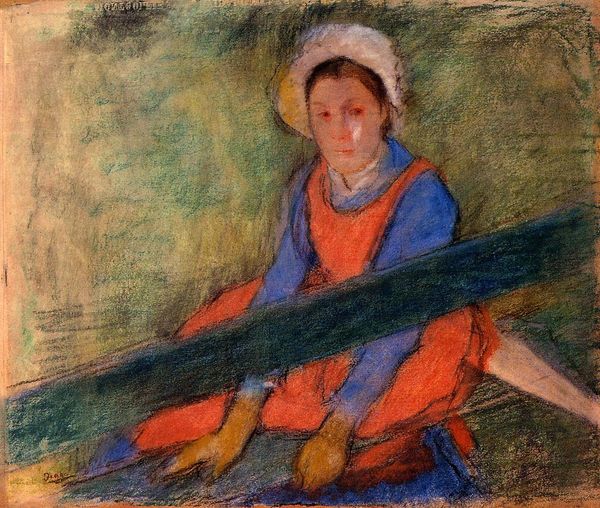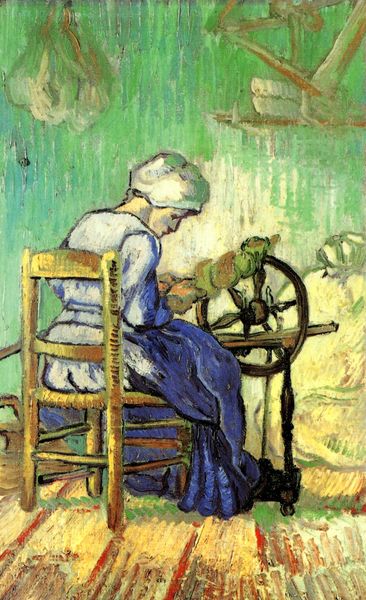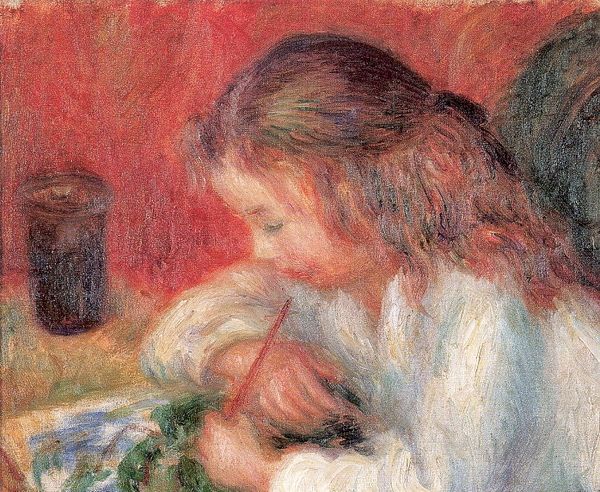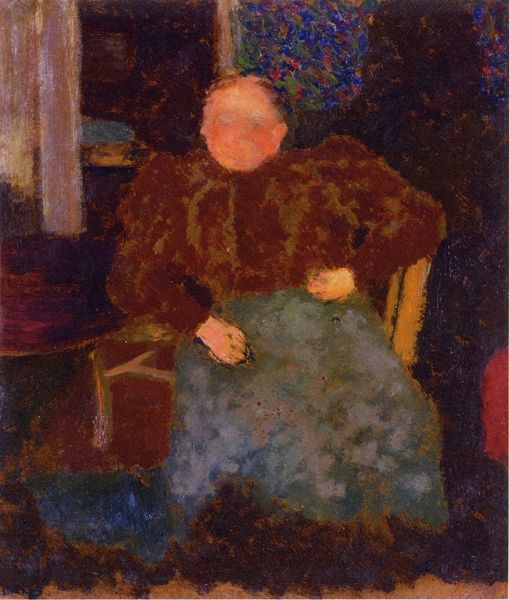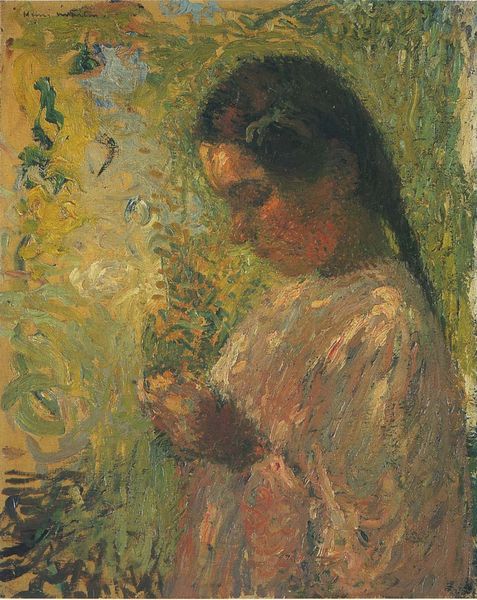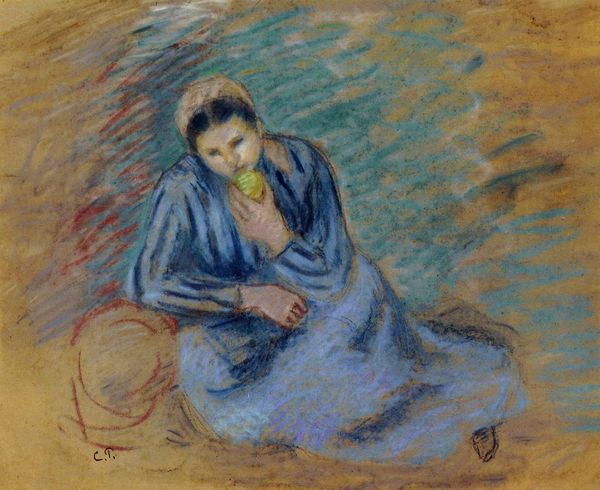
oil-paint
#
portrait
#
impressionism
#
oil-paint
#
oil painting
#
france
#
painterly
#
genre-painting
Copyright: Public domain
Curator: Here we have Camille Pissarro's "Pumpkin Merchant," painted in 1883. It's an oil painting and currently held in a private collection. My first impression is that it exudes a very tender atmosphere with soft, muted colors. Editor: Absolutely. The texture feels very tangible. You can almost feel the weight of those pumpkins. The woman’s posture tells a story of labor, of providing sustenance, and of course the limited agency for working-class women during the 19th century. Curator: Pissarro was known for his depictions of rural life and peasantry, showing an engagement with socialist politics. He chose subject matter that was representative of the changing French social landscape and labor. "Pumpkin Merchant" seems to align perfectly with that trajectory. What are your thoughts about its significance during that era? Editor: It is vital that we view this work through the lens of social history. At that time, the divide between rural and urban France was extremely pronounced. The rise of Impressionism itself coincided with massive urbanization and industrialization. I feel the painting embodies an elegy for a vanishing way of life but also a record of the hard working class of people at the heart of it all. It is also tempting to see her as a personification of labour in itself and how this labour is often undervalued. Curator: Indeed, we can examine this through the wider context of genre painting and its representation of daily life in contrast to more grand historical or mythological subjects. Pissarro's focus humanizes and democratizes art. Editor: Definitely. And if we look closer into the painterly quality, it reflects how Impressionism revolutionized artistic techniques, capturing fleeting moments. That focus wasn’t just aesthetic. For paintings like this, it challenged the rigid academic art standards while also indirectly speaking to class prejudices about what was appropriate to depict on the canvas. Curator: Precisely, its style defied the expectations for "high" art and validated everyday experiences, so its visual language resonated within a growing audience of viewers invested in seeing their own social realities recognized and valued. Editor: And even now, with the work in private hands, it forces the contemporary audience to reflect on questions of accessibility, of how the circulation of art either enhances or obstructs its broader societal effect. I’m glad we’re engaging with those topics. Curator: As am I; these dialogues around art's accessibility and its reflection on broader social change truly invigorate the conversation. Editor: Likewise, and maybe thinking more intersectionally about art, race, and class helps us all better interrogate historical assumptions within the dominant historical record.
Comments
No comments
Be the first to comment and join the conversation on the ultimate creative platform.
